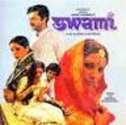Ahir Bhairav is a Hindustani classical raga. It is a mixture of Bhairav and the ancient but now rare raga Ahiri or Abhiri or perhaps a mixture of Bhairav and Kafi.
Arohana: S r G m P D n S’
Avarohana:S’ n D P m G r S
Ahir Bhairav is typical uttarang raga, which means emphasis is on the upper tetrachord. Best suited for the second Prahar of the morning, around 6 – 9 AM. The Carnatic music equivalent to this raga is Chakravakam.
Chakravakam, (pronounced chakravākam, Sanskrit: चक्रवाकम्, Tamil: சக்ரவாகம்) is a rāgam (musical scale), in Carnatic music (South Indian classical music). It is the 16th Melakarta rāgam (parent rāgam) in the 72 melakarta rāgam system. According to the Muthuswami Dikshitar school, this rāgam is called Tōyavēgavāhini or vegavahini.
It is the 4th melakarta in the 3rd chakra Agni. The mnemonic name is Agni-Bhu. The mnemonic phrase is sa ra gu ma pa dhi ni.[1] Its ārohaṇa-avarohaṇa structure (ascending and descending scale) is as follows (see swaras in Carnatic music for details on below notation and terms):
ārohaṇa : S R1 G3 M1 P D2 N2 S
avarohaṇa : S N2 D2 P M1 G3 R1 S
The notes in this scale are shadjam, shuddha rishabham, anthara gandharam, shuddha madhyamam, panchamam, chathusruthi dhaivatham and kaisiki nishadham. It is a sampoorna rāgam – rāgam having all 7 swarams. It is the suddha madhyamam equivalent of Ramapriya, which is the 52nd melakarta.
Chakravakam is a raga that is known to incites feelings of devotion, sympathy and compassion in the listeners.
(Source: wikipedia – ahir bhairav | chakravakam)
###


















Nice compilation. Could you check if the following are chakravakam
Neethoongum : http://www.youtube.com/watch?v=r5Di4lwxVHY
Poongatre : http://www.youtube.com/watch?v=xU7xOkjnCsI
http://www.muzigle.com/#!track/poonkatrey (Lousy Version)
Podhumada : http://www.youtube.com/watch?v=4AHHpM33psU
GREAT RESEARCH WORK AND HOME WORK TO COMPARE FILM SONGS OF SAME RAAGAS AND PRESENT IT WITH AROGANA AND AVAROGANAM .. IT WILL NO DOUBT HELP THE LEARNERS .. TO LEARN RAGAS FLOWS/SPECIALITY/ SANCAHARAM EXTRA. GOOD SERVICE!
I doubt the following are based on Chakravakam
1. Nee Padhi nan padhi
2. Angakale…
Vidukathaya
Aadiyil vachanmundai……(malayalam)
Film:-Chettathi-1965
Music:-M S Baburaj
Ragam:-ahir bhairav
Ka karoo sajni is Pilu, not Ahir.
Kannada Super Star Dr. Rajkumar’s song Heluvudu ondu maaduvudu innondu in film Jwaalamukhi is also Raag Ahir Bhairav / Ragam Chakravaka.
very nice blog. effective way to memorise ragas
Some more songs:-
1. https://www.youtube.com/watch?v=q1ZHZsGiJfg
2. https://www.youtube.com/watch?v=peFYo1MZzRQ
3. https://www.youtube.com/watch?v=_wdxjZ2dlAk
4. https://www.youtube.com/watch?v=lC1h2C_TkAk
And marriage songs:-
5. https://www.youtube.com/watch?v=bYVQixBwz6Y
6. https://www.youtube.com/watch?v=zxuUEF_bzn4
Sorry all below songs in Ananda Bhairavi